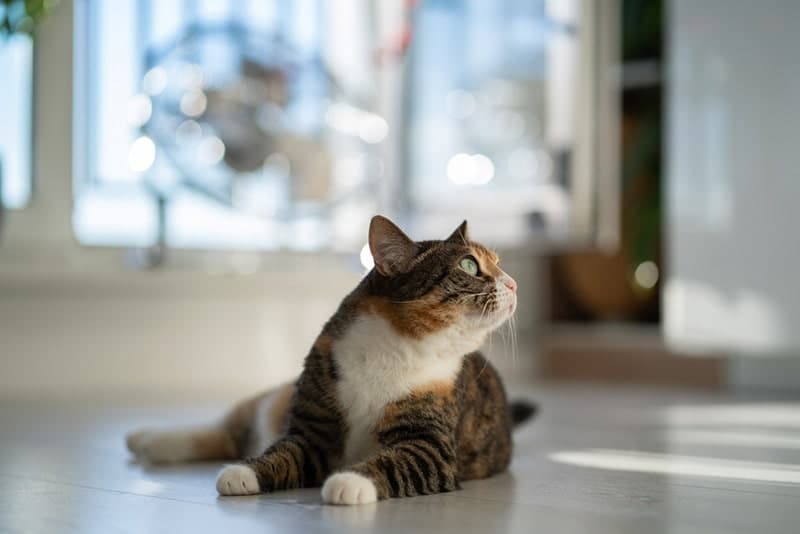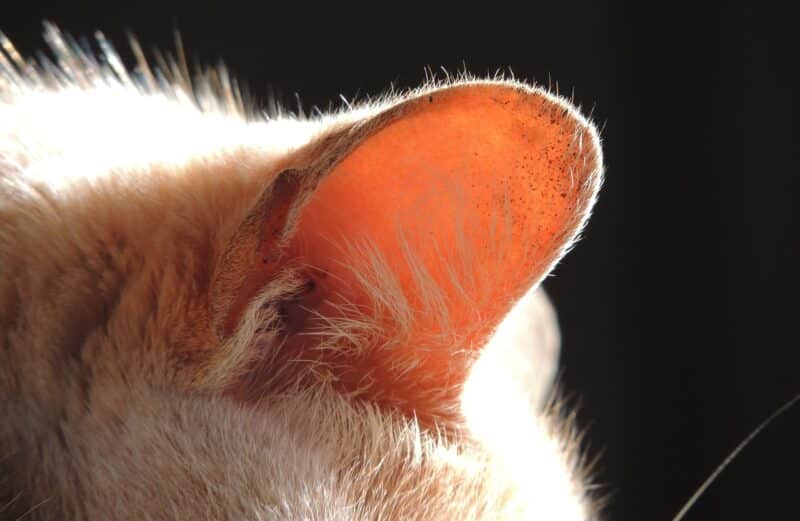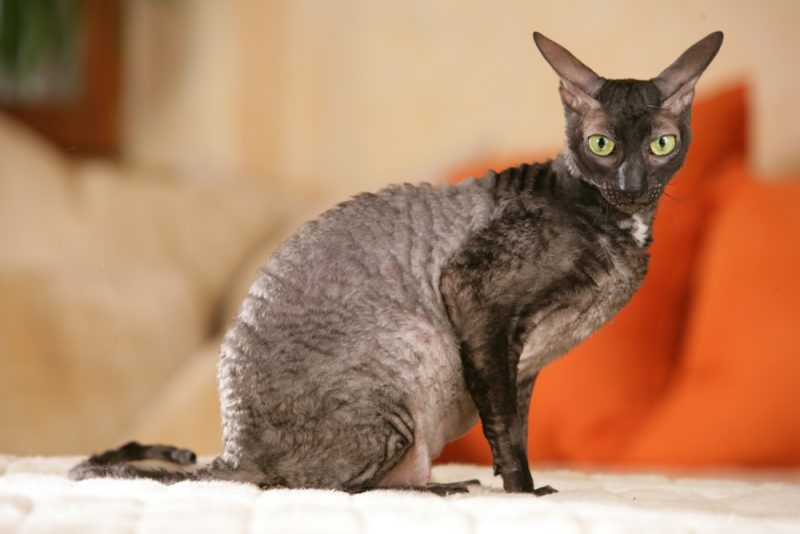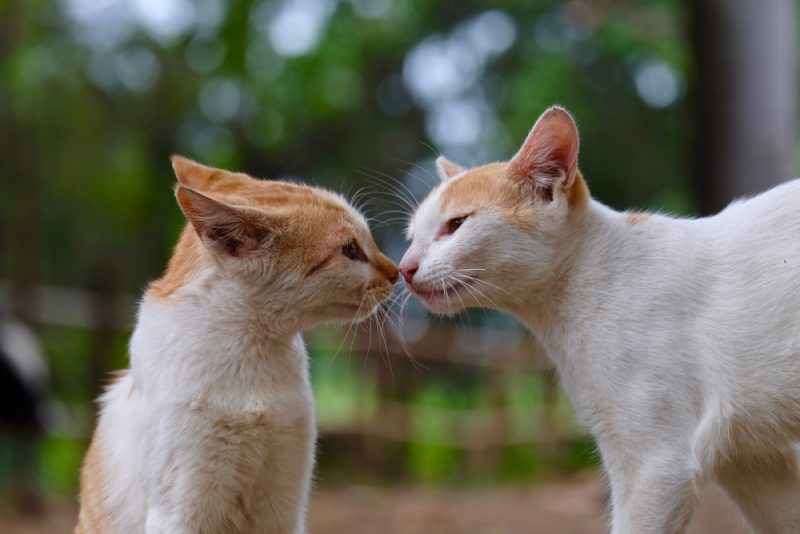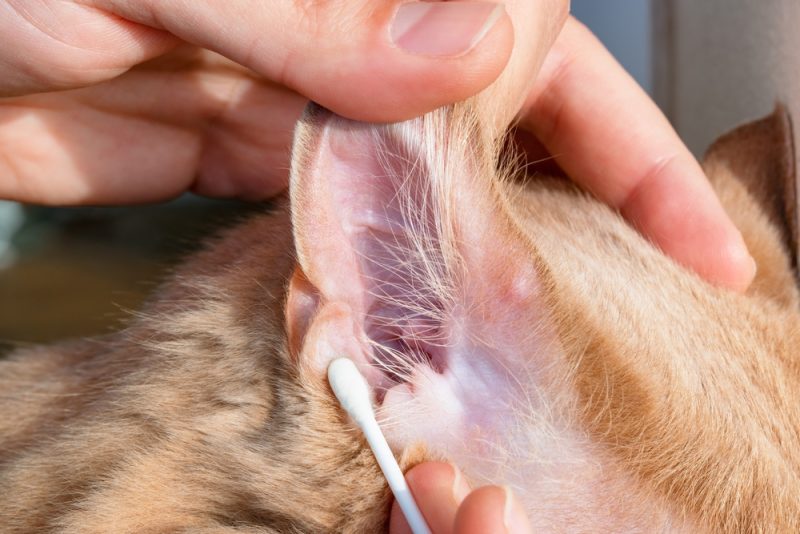Cat owners everywhere are familiar with the feline antics their furry roommates get up to, but it’s not always obvious why they do the peculiar things they do. For example, why do cats just lie in the middle of the floor even when they have a perfectly comfy pet bed nearby? The answer is more nuanced than you might think. There are actually numerous reasons your cat might prefer resting on the bare floor. Read on with us as we break down those reasons so you can have more insight into your cat’s behavior.

The 7 Reasons That Cats Lay in the Middle of the Floor
1. It’s Cooler
During the sweltering summer heat, your cat might lounge on the floor to beat the heat and cool off a bit. You can identify a cat trying to cool down by lying on the floor by the way they sprawl out their bodies. They do that to make as much contact with the floor as possible, which cools them off faster than if they were just sitting or curled up in a “loafing” position. Tile floors are ideal, but any flat, cool surface will do the trick. In the winter, you won’t see this very much if at all because your cat won’t need to cool down, and they’ll in fact seek out heat instead.
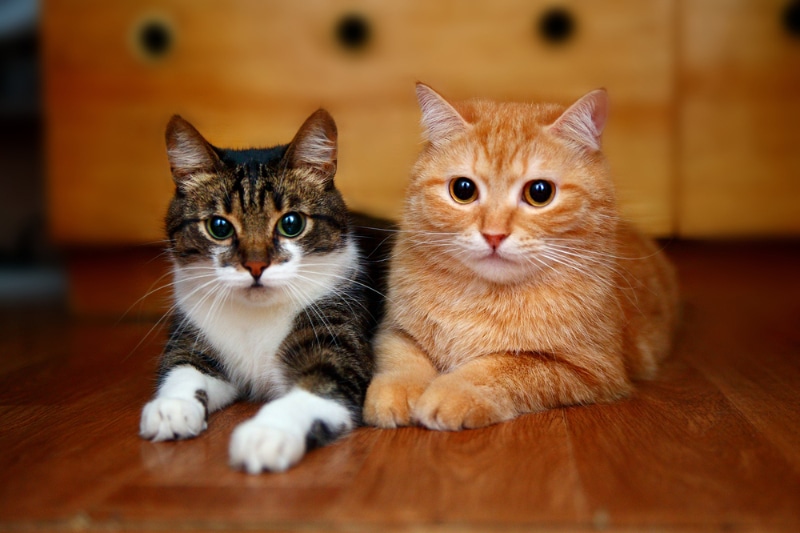
2. They’re Sunbathing
Cats don’t get tans, but they do like the feel of sunlight on their fur and are happy to soak up some warm rays on a chilly day. They love windows that let in natural light, whether they’re watching the great outdoors (AKA cat TV) or just drowsing. This is normal and healthy in moderation, but ensure your cat has plenty of clean, fresh water to stay hydrated and to stave off dehydration caused by too much sun exposure.
3. They Trust You
Many cats are natural skeptics, and they show their trust in understated ways that don’t directly translate to humans. For instance, sleeping on the floor with their belly exposed is a big sign that your cat is comfortable around you and feels safe in your presence. Giving them some attention when they’re showing their trust in such a sweet way can go a long way to developing a closer bond with your kitty.
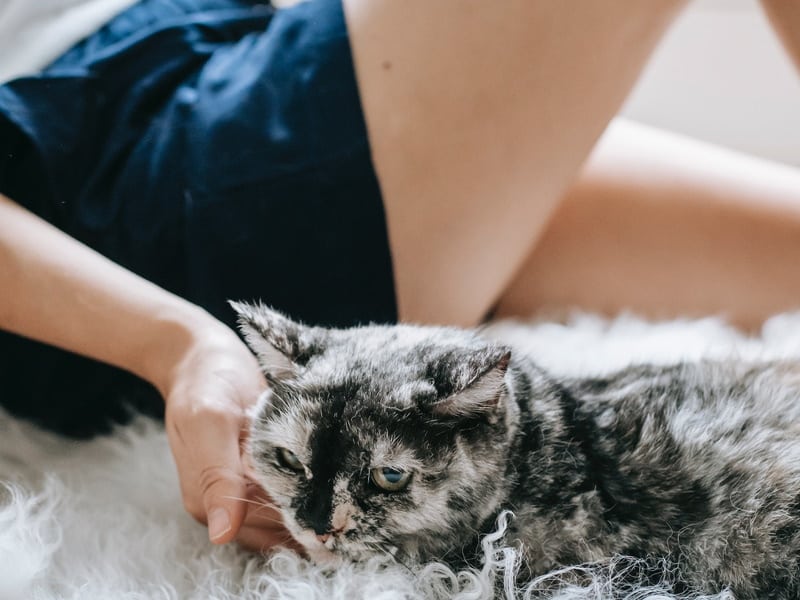
4. They’re Strategically Located
Cats have meticulously honed hunting instincts thanks to countless years of evolution, and that can even affect where they choose to lie down. What looks to you like a random spot on the floor could actually be a tactically chosen spot to watch for prey or merely to observe for potential threats in their territory. You can confirm this theory yourself by watching your cat for a while. If they seem alert and swivel their head at the slightest sounds or movements, they’re in hunting mode.
5. Some Cats Prefer Sleeping on the Floor
It’s strange but true. Some cats, especially strays that become house cats, are so used to sleeping on the ground that they prefer it. Still, any cat may prefer sleeping on the floor, tables, shelves, countertops, or other flat surfaces.
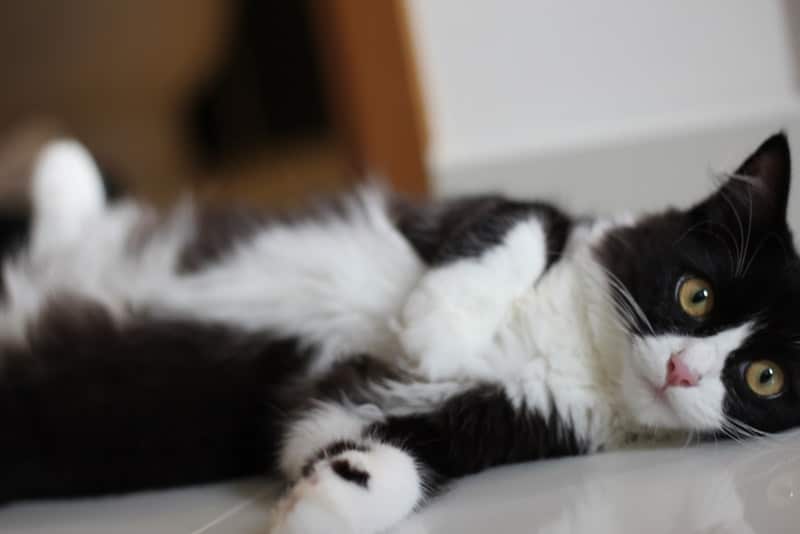
6. You Move Too Much When You Sit With Your Cat
Some cats are less patient than others when it comes to being jostled around by movements on the furniture and will seek out some peaceful quiet time by lying on the ground. It doesn’t mean they don’t love you, though; they just love their cat naps too!
Chaotic households with children or other pets inspire this behavior more often than quiet homes. This is why it’s important to have an area set aside for your cat where they can go to unwind and not be disturbed, though there’s no guarantee your cat won’t just prefer a nice spot on the floor. Alternatively, you could try simply moving less when you sit with your cat so they feel more comfortable.
7. Your Cat Might Be Sick or Hurt
Let’s be clear here: laying on the floor by itself isn’t a cause for concern. It’s when you start noticing strange or worrying health-related signs along with a sudden preference for laying on the floor that you want to pay more attention, as your cat might be suffering from an illness. Cats are reluctant to let you know they’re sick and might hide from you. If your cat starts laying on the floor and exhibiting any of the following signs, we urge you to take them to a trusted vet.
If you need to speak with a vet but can't get to one, head over to PangoVet. It's an online service where you can talk to a vet online and get the advice you need for your pet — all at an affordable price!

- Abnormal sleep habits: Sleeping much more or much less while on the floor may be a sign that your cat is in pain.
- Hiding: A normally social cat who lies on the floor in remote areas of your home might be feeling under the weather or nursing a wound.
- GI signs: Including vomiting, diarrhea, and bloating, these are some of the most obvious and concerning signs to watch for if your cat is suddenly laying on the floor.
- Changes in appetite: If your cat is drinking and eating very little or a lot accompanied by bouts of floor-laying, your cat may need to get a checkup to pinpoint the cause.
- Wounds: Cats that got hurt by another animal or hazardous objects might lay on the floor by themselves while they recuperate.
- Limping or an altered gait: A cat that’s injured may lay on the floor instead of on their favorite perch and may limp when they attempt to walk. They may also opt to walk to places where they would previously run to or jump to.

Final Verdict
In most instances, there’s no need to stop your cat from lying in the middle of the floor. It’s not typically an issue on its own if your cat prefers to lay on the floor instead of on a pet bed or on the furniture with you. They might be trying to regulate their body temperature, get in some private time to show they trust you, or maybe they just prefer the floor. As long as your cat isn’t exhibiting any negative health effects and lying on the floor, it’s best to let them lay where they feel most comfortable and safe.
Featured Image Credit: DimaBerlin, Shutterstock
